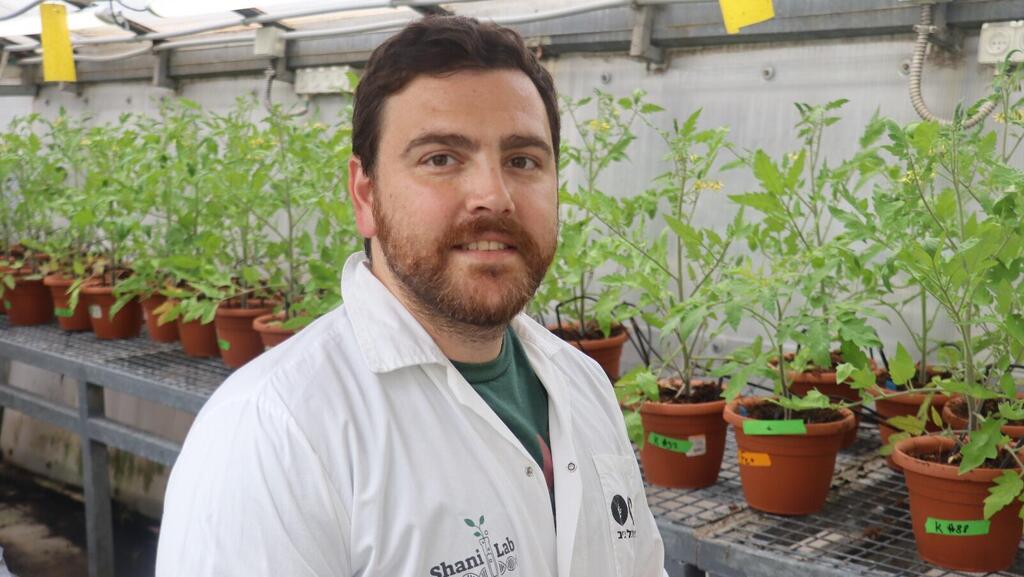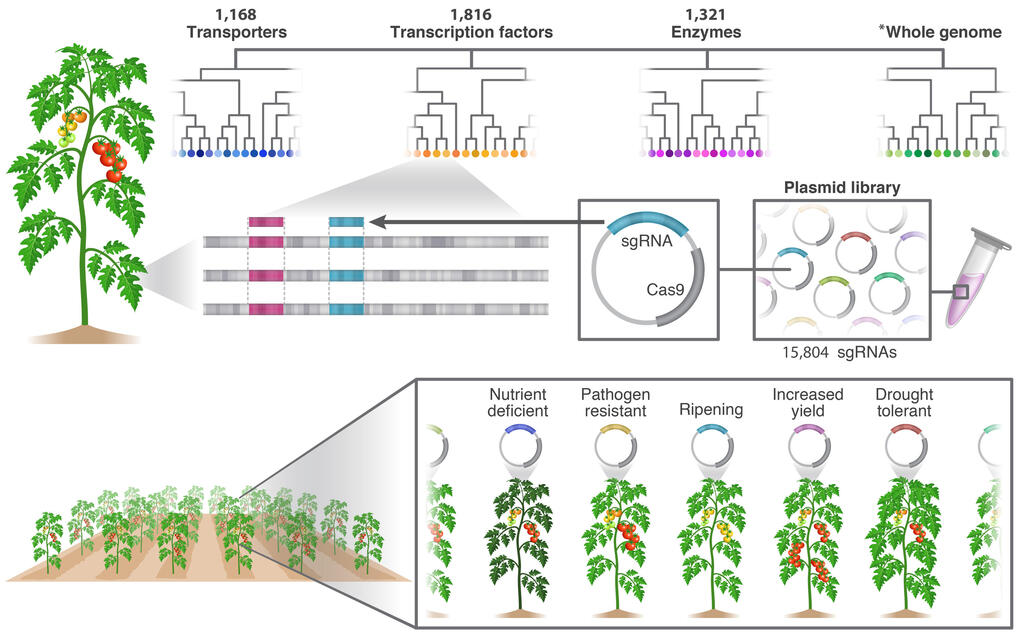Researchers from Tel Aviv University’s School of Plant Sciences and Food Security have developed a genetic editing method suitable for crop plants, enabling them to influence a wide range of traits in tomatoes, including the fruit’s taste and shape. The team believes the innovative technology could be applied to many types of crops and help develop new and improved varieties.
“We’ve shown that our technology allows us to select and modify specific traits—an essential capability for advancing agriculture and achieving food security,” the researchers said.
The study was led by Prof. Eilon Shani and Ph.D. student Amichai Berman, in collaboration with Prof. Itai Miroz and additional researchers from the School of Plant Sciences and Food Security, as well as Dr. Osnat Yanai of the Israeli agri-tech company NetaGenomiX. Scientists from the Chinese Academy of Sciences in Beijing also participated. The findings were published in Nature Communications.
Prof. Shani explained that researchers worldwide are working to advance agriculture to meet the challenges of rapid global change and feed a growing population in the decades ahead. Among other strategies, genetic editing technologies are being promoted to develop new plant varieties with desirable traits, such as improved resistance to drought and disease, better taste, and more efficient nutrient use.
One of the most significant tools in this field is the CRISPR-Cas9 system, which revolutionized genetic editing by enabling precise changes to be made to specific genes within a genome. However, when it comes to crop development, CRISPR has faced several fundamental challenges. While the technology allows targeted editing of individual genes, the scale has been limited—until now, only a small number of genes could be edited and tested.
In their new study, the researchers significantly expanded the efficiency of the method, allowing them to investigate the functions of thousands of genes.
Another obstacle in crop plants is “genetic redundancy”—a phenomenon in which multiple genes from the same family share similar amino acid sequences and compensate for one another. As a result, disabling or editing a single gene often has little effect on the trait. In previous work, the team developed a breakthrough solution to overcome this challenge.
“To overcome genetic redundancy, we aimed to simultaneously edit entire families of similar genes,” Berman said. “We developed a dedicated algorithm and fed it a list of thousands of genes we wanted to target. The algorithm identified a CRISPR unit for each gene—or gene group—that would create the desired change, effectively building a CRISPR library.”
In their initial research, the method was successfully tested on the model plant Arabidopsis. In the current study, the researchers tested it for the first time on a crop plant: the tomato.
Get the Ynetnews app on your smartphone: Google Play: https://bit.ly/4eJ37pE | Apple App Store: https://bit.ly/3ZL7iNv
They constructed 10 CRISPR libraries comprising roughly 15,000 unique CRISPR units tailored to the tomato genome. Each unit was designed to target a specific gene family. The researchers then used the CRISPR units to genetically modify about 1,300 tomato plants, each with a different gene family edited.
They monitored each plant to determine whether the selected traits had changed, such as fruit size, shape, taste, nutrient use, or pest resistance. Several lines showed higher or lower sweetness compared to control plants.
The researchers noted that genetic editing in tomatoes—and crop plants more broadly—is a technically complex process. Rather than starting from seeds, the process relies on tissue cultures: regenerating entire plants from leaf segments.
“In this study, using our innovative method, we successfully introduced desirable genetic changes in tomato gene families and pinpointed which specific edits produced the desired results,” said Prof. Shani.
NetaGenomiX, the Israeli agri-tech company that collaborated on the study, has been licensed to commercialize the technology. The goal is to support food security by developing non-GMO crops that are adapted to climate change and offer value to both farmers and consumers.
“We believe our research paves the way for breeding improved crop varieties across a wide range of species and advances the broader field of plant science,” Berman concluded. “In future studies, we’re working to develop additional desirable traits in both tomatoes and rice.”



